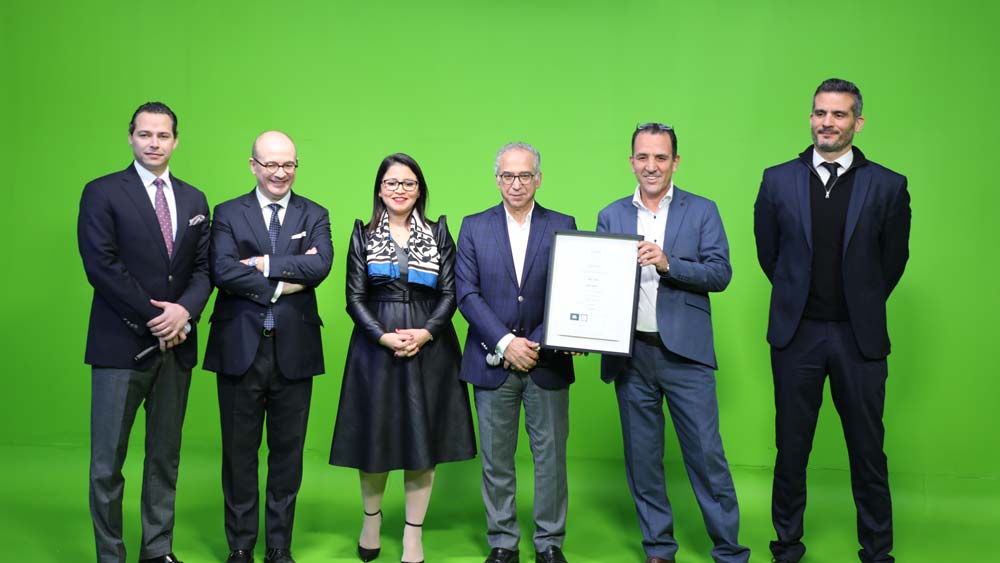Since the early 2000s, the microfinance sector has grown dramatically from relative obscurity to being at the forefront of poverty alleviation and a part of developing world finance. During the same period, however, mounting concern about the threat of money laundering and terrorist financing led to a general tightening of rules and compliance. To date, for fear of undermining its social purpose, regulation of microfinance has been light touch and sometimes non-existent. To support the evolving nature and potential of this important sector, the Global Facility on Anti-Money Laundering and Counter-Terrorist Financing has been piloting a novel regulatory solution to close gaps and build compliance while supporting financial inclusion.
Microfinance: a 'real business'
Microfinancing as a system of small-time lending to support low-income people and informal businesses – especially useful for those without collateral or access to bank loans – has grown to become a market of 2.5 to 3 billion customers in at least 168 countries, and growing. Even early on in that growth, back in 2005, the then UN Secretary General emphasised that microfinance is “not charity. In some cases, it might have started out as philanthropy. But today it is a real business.” 1
Yet, it is business with a singular, social purpose. Back then, analysts writing in an International Monetary Fund publication, already noted that it brought gains in “income stability and growth, school attendance, nutrition, and health”, and the empowerment of women, who make-up 80% of borrowers around the world nowadays.
For a long-time, microfinancing has been off the the regulatory radar because of the relatively small scale of the sector in comparison to global banking or even international money transfers. One recent estimate2 has put global microfinance to be worth $124 billion, almost double in size compared to ten years previously, yet still dwarfed by the $500 billion transferred in remittances globally.3 Though the amount of individual loans can vary and in some jurisdictions are rising, generally they fall well below the threshold set in the 1990s of $/€ 10,000 for reporting to regulators and are therefore seen to be lower risk.
Microfinance is estimated to be worth $124 billion, almost double in size compared to 10 years previously
In a study of microfinance in Vietnam, one of the world’s top three microfinance markets, the average loan was found to be just $200.4 The study, which assessed the national sector for anti-laundering and terrorist financing risk compliance, noted that familiarity between group members meant opportunities for criminal infiltration was low, a finding reflected in the absence of reported cases of laundering over the two-year study period. The assessment documented how capital for Vietnamese microfinance came from three sources: contributions by members, donors including the Asian Development Bank and World Bank, and government budgets – leaving little room for criminal investors.
The results of such a comprehensive assessment enabled the sector to be treated with a lighter touch in terms of FATF recommendations. The use of “simplified measures” is allowed within the Task Force’s recommendations “provided that lower risk has been identified, and this is consistent with the country’s assessment of its money laundering and terrorist financing risks.”5
Victim of its success
On the capital side of the balance sheet, however, the risks of money laundering in some contexts may be changing. When investment in microfinance from communities becomes large-scale – and it turns into big business – there is the potential for risks to mount.
In India, home to the world’s largest microfinance sector valued at $1.785 billion and growing6, regulation was tightened after the predatory tactics of profit-driven microfinanciers were exposed.7 Nevertheless, instances of fraud8 in the sector remain and the State Bank of India has recently urged the country’s financial system as whole to raise the bar against anti-money laundering in anticipation of a Financial Action Task Force evaluation to be carried out this year.9

Large scale fraud inevitably leads to money laundering and so regulation must catch-up. Around the world, most microfinance institutions are funded by international donors, multilateral banks or from amongst their local communities, possibly as a cooperative. However, since this limits the ability of institutions to grow there is increasing interest in capital financing and equity investment. Major non-profit microfinance institutions in South and Central America have become profit-making enterprises, with one notable example floating on the stock exchange.
In this changing environment, countries are keen to close any potential loopholes in their financial sectors in order to maintain compliance with global standards. Non-compliance with Task Force recommendations and a resulting blacklisting potentially hits the whole national economy, not just the pockets of low-income borrowers.
Yet, there is considerable reluctance to regulate microfinance for fear of interfering in the sector’s purpose. Regulation, it is thought, would add to costs borne by the borrower in the form of interest rates and thereby reduce inclusion.
Though documented cases of money laundering or terrorist financing through microfinance are rare, the shape of the sector is changing, opening it up to new risks. Some advocating for growing microfinancing further suggest that access can be increased through greater use of digital platforms, developing new products and working with new providers to reach more people.10 In this context, overzealous regulation could lead to a worst case scenario of de-risking in the microfinance sector where individual customers, whole populations or financial institutions in the developing world are cut-off from access to finance altogether.
The threat is real; the executive director of the Muslim Charities Forum has noted it is near impossible to open a bank account for a charity in Somalia, Yemen or Syria.11 De-risking – which is about sidestepping the problem rather than managing the risk – undermines financial integrity as it potentially pushes money flows, including dirty cash, underground and even further from the watchful gaze of regulators.
Is self regulation the solution?
The sector presents a uniquely fraught set of challenges to regulators. At first sight the paltry sums offered to borrowers would appear to offer little to scheming terrorists. However, a European Parliament report indicates that even the small funds provided through microfinance can be useful to terrorists associated with the Islamic State.
Yet, financial innovations, such as microfinance, are often most prevalent, and most sought after, in those geographic areas of the world that are classified as higher risk. And it is often the case that in those contexts Know Your Customer checks are informal as official identification is weak or absent. Community verification offers a pragmatic alternative but hardly matches up to formal legal standards of compliance. And the sort of record-keeping of transactions usually required by supervisors presents a burden that would likely drown a small microfinance association.
The difficulty of legal regulation in this sector is acute and is reflected in the small number of countries to have enacted primary legislation – or even secondary rules and resolutions – for microfinance. Even where there are laws they are often rarely enforced as countries prioritise attention on higher risk financial sectors.
Even where there are laws, they are often rarely enforced as countries prioritise attention on higher risk financial sectors.
Such a legal grey area does little to put the sector on a firm footing for future growth. So, what can be done to strengthen inclusion, while reducing vulnerability to dirty money?
Self regulation has been used to mitigate money laundering and terrorist financing risks in many sectors and professions, and staved off the costly burden of mandatory supervision. Industry associations and national authorities can help by providing the expertise and training needed to strength compliance. Technical certification of anti-money laundering and countering terrorist financing within the private sector has been a central plank of establishing norms across sectors and building compliance.
The Global Facility has been exploring how microfinance institutions can take advantage of a certification process as a way of complementing government supervision.
In 2021, Enda Tamweel, a major Tunisian micro-finance institution with 400,000 borrowers, was the first microfinance institution in Africa and the Arab world to voluntarily undertake an assessment and be certified for AML/CFT compliance. Certification was carried out by industry experts and awarded against the international Anti-Money Laundering 30000 standard. It allowed risks within the Enda Tamweel’s operations to be properly assessed – and mitigated if required – and ultimately reduced.

Crucially, it does not replace or override legal supervision by national government. Rather, it allows community-led processes of customer due diligence to be put onto paper, assessed, and officially endorsed. Such a pragmatic approach means that measures can be proportionate, and mitigate actual rather than perceived risks. The promising results of this pilot mean that over the coming year the Global Facility will be extending this innovation to jurisdictions around Africa and the Middle East.
1. Keyes, D. (2006). Protecting the Peace While Profiting the Poor: Microfinance and Terrorist Financing Regulation. Law and Business Review of the Americas, 12, 545.
2.Microfinance Barometer 2019
3.Aligning financial inclusion and financial integrity: Regulating and supervising microfinance in Vietnam
4. Vision of microfinance in India, PWC, November 2019
5. Andhra House passes MFI Bill, Business Today, 15 December 2010
6. Crackdown on Kerala microfinance firm helps expose Ponzi fraud, Livemint, Nidheesh M.K., 4 September 2020
7. India must raise the bar on anti-money laundering systems, The Hindu, Vikas Dhoot, 31 December 2020
8. Microfinance vs. Financial Inclusion: What’s the Difference?, Center for Financial Inclusion, 27 February 2013
9. Analysis: NGOs and anti-terror laws: How to keep your bank manager happy, The New Humanitarian, Joe Dyke, 31 December 2014



